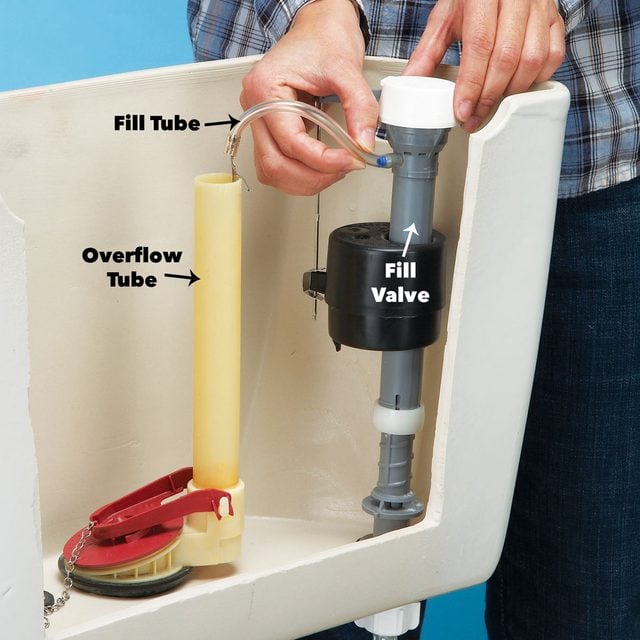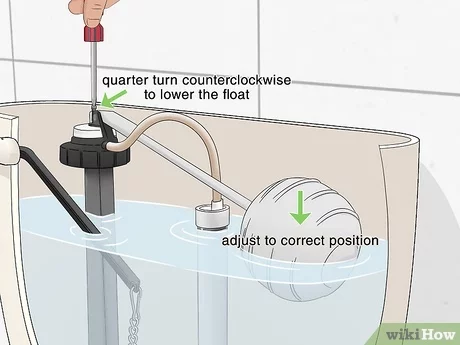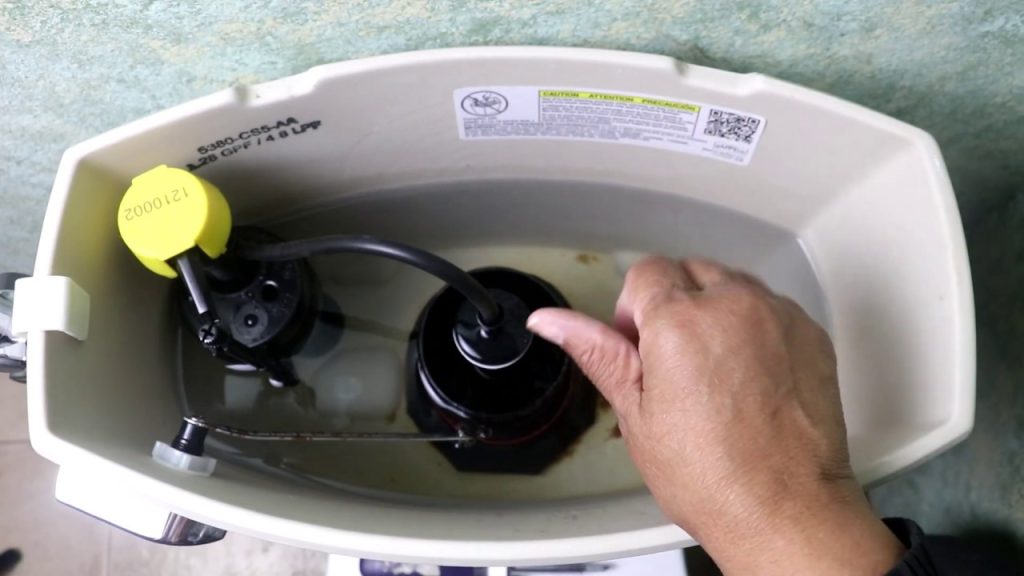A running toilet can be annoying. It wastes water and increases your bill.
Fixing it is easier than you think. A running toilet is a common issue in many homes. This problem can lead to higher water bills and waste precious resources. But don’t worry, you can solve it yourself with a few simple steps.
Understanding why your toilet runs is the first step. It might be due to a faulty flapper, an issue with the fill valve, or even a problem with the float. In this guide, we’ll walk you through the process of identifying the cause and fixing it. By the end, you’ll have a quiet, efficient toilet and peace of mind. Let’s get started!

Credit: www.youtube.com
Identify The Cause
A running toilet can waste a lot of water. It’s essential to identify the cause to fix it efficiently. Understanding the common issues and having the right tools will help you resolve this problem quickly.
Common Issues
Several common issues can cause a toilet to run continuously. Here are a few:
- Faulty flapper: The flapper might not seal the tank properly.
- Float height: The float may be set too high.
- Fill valve problems: The fill valve could be damaged.
- Chain length: The chain connecting the flush handle to the flapper might be too short or too long.
Tools Needed
To diagnose and fix a running toilet, you will need a few tools. Having these tools ready will make the job easier.
| Tool | Purpose |
|---|---|
| Adjustable Wrench | Tighten or loosen nuts and bolts. |
| Screwdriver | Remove or secure screws. |
| Pliers | Grip and manipulate small parts. |
| Replacement Parts | Replace faulty components. |
By identifying the cause and using the right tools, you can stop your toilet from running and save water.
Shut Off Water Supply
Stopping a running toilet requires turning off the water supply. This simple step prevents water wastage and allows you to work on repairs. Follow these easy steps to shut off the water supply.
Locate The Valve
Find the water shut-off valve behind the toilet. It’s usually close to the wall. The valve is often a small knob or lever. If you can’t find it, check along the water line.
Turn Off Water
Turn the valve clockwise to shut off the water. You may need to use a bit of force. Ensure the valve is fully turned to stop the water flow. This will prevent any water from entering the toilet while you fix it.
Check The Flapper
One common reason for a running toilet is a faulty flapper. The flapper is a small rubber part at the bottom of the tank. It controls the flow of water from the tank to the bowl. If this part is damaged or not sealing properly, your toilet will continue to run. Let’s explore how to inspect and replace the flapper if needed.
Inspect For Damage
First, turn off the water supply to the toilet. This prevents water from flowing while you work. Next, remove the tank lid and set it aside carefully. Look inside the tank and locate the flapper. It’s usually a round rubber part connected to the flush handle by a chain.
Examine the flapper closely. Check for any visible damage such as tears, cracks, or warping. A damaged flapper will not seal properly and cause the toilet to run. Also, check if the chain is too tight or too loose. A misaligned chain can prevent the flapper from sealing correctly.
Replace Flapper
If you find any damage, you need to replace the flapper. First, purchase a new flapper from a hardware store. Ensure it matches the size and type of your old flapper. Most flappers are universal, but it’s good to double-check.
Follow these steps to replace the flapper:
- Disconnect the chain from the flush handle.
- Remove the old flapper by unhooking it from the overflow tube.
- Clean the area around the valve seat to ensure a good seal.
- Attach the new flapper to the overflow tube.
- Reconnect the chain to the flush handle. Ensure it’s not too tight or too loose.
Once replaced, turn the water supply back on. Flush the toilet to check if the running has stopped. If the toilet still runs, the problem may be with another component.
Adjust The Fill Valve
Adjusting the fill valve can fix a running toilet. This part controls the water level in the tank. If the water is too high or too low, the toilet may run. Below, we will explain how to locate and adjust the fill valve to stop your toilet from running.
Locate Fill Valve
First, remove the toilet tank lid. Place it in a safe spot. Look inside the tank. The fill valve is usually on the left side. It connects to a vertical tube. The valve might be a ballcock or a newer style. Both types work the same way. Make sure you can see it clearly.
Adjust Water Level
Next, adjust the water level. For a ballcock fill valve, bend the float arm down. This will lower the water level. If the float is a cylinder, squeeze the clip on the float. Slide it down to lower the water level. Check the water level. It should be about one inch below the top of the overflow tube. If the water level is correct, the toilet should stop running.
Examine The Flush Handle
A running toilet can waste a lot of water. One simple way to fix it is by examining the flush handle. The flush handle plays a key role in the toilet’s flushing system. Problems with the handle can cause the toilet to run continuously. Here’s how to check and fix it.
Test Handle
First, test the flush handle. Push it down and release. Does it return to its original position smoothly? If the handle sticks or does not move freely, it might be the source of the problem. Sometimes, a sticky handle can cause the toilet to run.
Tighten Or Replace
If the handle is loose, tighten it. Use a wrench to secure the nut inside the tank. Do not overtighten. If the handle is still not working properly, it might need replacement. Get a new handle from a hardware store. Follow the instructions on the package to install it. This simple fix can often stop a running toilet.

Credit: www.familyhandyman.com
Inspect The Float
To stop a running toilet, inspecting the float is crucial. The float controls the water level in the tank. If it’s not positioned correctly, water may keep running. Here’s how to inspect and fix the float.
Check Float Position
The float should move freely. If it’s stuck, it can cause the toilet to run. Look for any obstructions.
The float should be set to the right height. Too high, and the water overflows. Too low, and the toilet won’t flush properly.
Use a ruler to measure the water level. It should be about one inch below the top of the overflow tube.
Adjust Or Replace Float
If the float is too high or low, adjust it.
- For a ball float, bend the arm down to lower the float. Bend it up to raise it.
- For a cup float, use the adjustment screw. Turn it clockwise to lower the float. Turn it counterclockwise to raise it.
If the float is damaged, replace it.
- Turn off the water supply.
- Flush the toilet to empty the tank.
- Remove the old float.
- Install the new float, following the manufacturer’s instructions.
Test the new float. Ensure it moves freely and is set to the correct height.
Check For Leaks
Is your toilet running non-stop? This common issue can waste water and increase your utility bill. To fix it, start by checking for leaks. This step is crucial in identifying the root cause of the problem.
Inspect Seals
First, inspect the seals inside the toilet tank. These seals prevent water from leaking into the bowl. Remove the tank lid and look closely at the seals around the flapper and flush valve. Any signs of wear or damage indicate potential leaks.
To test the seals, add a few drops of food coloring to the tank. Wait for about 15 minutes. If the colored water appears in the bowl, the seals are likely leaking.
Replace Damaged Seals
If you find damaged seals, replace them immediately. Turn off the water supply to the toilet. Flush the toilet to empty the tank. Remove the old seals carefully. Install the new seals in place of the old ones.
Make sure the new seals fit snugly. Turn the water supply back on and let the tank fill. Check again for leaks using the food coloring method. If the colored water stays in the tank, the problem is fixed.

Credit: www.familyhandyman.com
Reassemble And Test
After identifying the issue and making necessary repairs, it’s crucial to reassemble and test your toilet. This final step ensures your toilet functions properly without any leaks or running water. Follow these simple steps to complete the task.
Reconnect Water Supply
Start by reconnecting the water supply to your toilet. Ensure the supply line is securely attached to the fill valve. Turn on the water supply by rotating the shut-off valve counterclockwise. Allow the tank to fill up with water.
Check for any leaks around the supply line and the base of the tank. Tighten any connections if you notice water dripping. A loose connection can cause problems later.
Test For Proper Function
Once the tank is full, test the toilet for proper function. Begin by flushing the toilet. Observe the flushing process closely.
Ensure the flapper closes properly after the flush. The fill valve should stop once the tank is full. Listen for any continuous running water. This indicates an unresolved issue.
If everything seems fine, flush the toilet a few more times. This guarantees all components work well together. If you encounter any issues, revisit the previous steps to identify and fix the problem.
Proper testing ensures your toilet operates efficiently and prevents water wastage.
Frequently Asked Questions
Why Is My Toilet Constantly Running?
A constantly running toilet is usually due to a faulty flapper, fill valve, or float. These parts can wear out or become misaligned, causing water to continuously flow.
How Can I Fix A Running Toilet?
To fix a running toilet, check the flapper, fill valve, and float. Adjust or replace these components as needed. This should stop the running water.
What Tools Do I Need To Stop A Running Toilet?
You typically need a screwdriver, pliers, and possibly a replacement flapper or fill valve. These tools help you adjust or replace faulty parts.
How Do I Check The Flapper In My Toilet?
First, remove the toilet tank lid. Then, inspect the flapper for any signs of wear or damage. If it’s worn, replace it.
Conclusion
Fixing a running toilet can save water and lower bills. By following these steps, you can easily solve the problem. Check the flapper, float, and fill valve. Replace or adjust as needed. Keep your toilet in good working order. Remember, a little effort goes a long way.
Regular maintenance can prevent future issues. Enjoy a quieter, more efficient bathroom. Now, you’re ready to tackle that running toilet with confidence.



